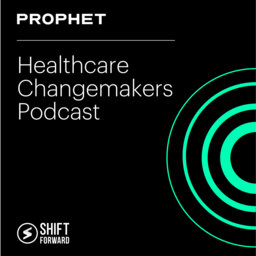Healthcare Changemakers
Prophet’s Healthcare Changemakers podcast is where healthcare leaders who are driving change in their organizations, as well as today’s healthcare exp…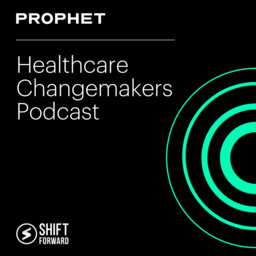 Emily Fry of Geisinger20:39
Emily Fry of Geisinger20:39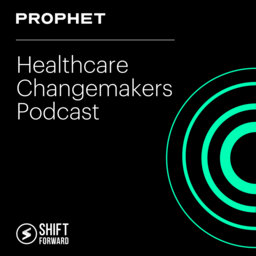 Mary Lantin of Availity18:37
Mary Lantin of Availity18:37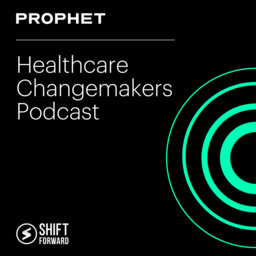 Ben Andrew of Intuitive22:58
Ben Andrew of Intuitive22:58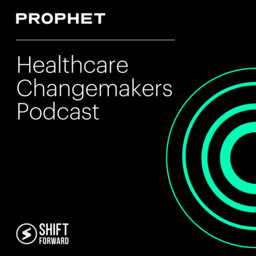 Aaron Patzer of Vital24:43
Aaron Patzer of Vital24:43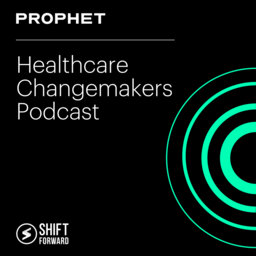 Fred Turner of Curative24:28
Fred Turner of Curative24:28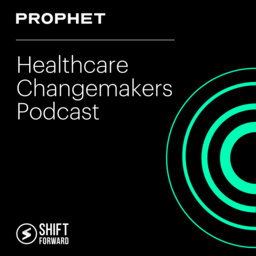 Jodi Rosen of City of Hope33:44
Jodi Rosen of City of Hope33:44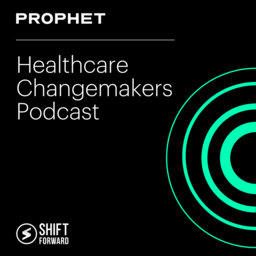 David Grandy of Kaiser Permanente19:09
David Grandy of Kaiser Permanente19:09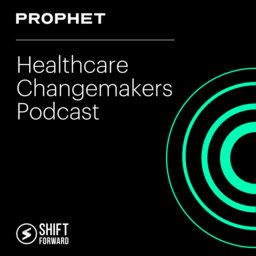 Darrell Johnson of RLDatix14:43
Darrell Johnson of RLDatix14:43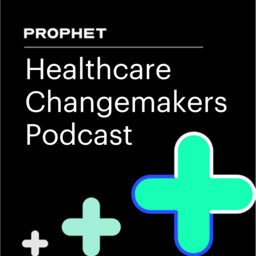 Austin Chiang MD of Medtronic21:42
Austin Chiang MD of Medtronic21:42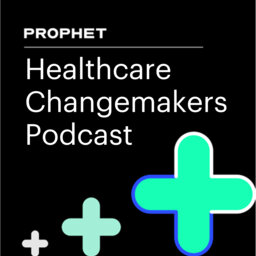 Prakash Patel MD of MaxHealth33:05
Prakash Patel MD of MaxHealth33:05 Alyssa Jaffee of 7wire Ventures24:54
Alyssa Jaffee of 7wire Ventures24:54 Jim Rogers of Mayo Clinic28:31
Jim Rogers of Mayo Clinic28:31 Faisel Syed MD of ChenMed28:43
Faisel Syed MD of ChenMed28:43
Aaron Patzer is Founder and CEO of Vital, a modern emergency department software for patients and providers that uses artificial intelligence to significantly reduce wait times, identify high-risk patients, and predict admits hours before they occur. If his name sounds familiar, it’s because he’s the founder of Mint.com, and was instrumental in making nearly all of Intuit’s products hyper-intuitive in the heavily regulated environment of financial services.
Hello and welcome to Prophets Healthcare Changemakers podcast, where we'll be talking to leaders in health care who are focused on transforming their organizations to drive the next level of growth for their business and for health care at profit. We believe that the organizations that thrive in health care are those that dare to change the game, striving to improve human health, create better experiences and make the best of care and enduring and sustainable reality for all. Those that will transform health care are the changemakers. And for this podcast we want to focus on them. Our podcast dials into and recognizes the people behind the transformation and their journeys and changing the game one story at a time. Are you ready to dive in?
Hi, I'm Paul Shrimp, your host for this episode. And today I'm joined by Aaron Pitzer, CEO and founder of Vital. Aaron, welcome.
Thanks for having me.
Well, as we dive in, we always want to take a moment for you to provide a couple minutes about who you are and your background. I'm assuming you can't do that without mentioning Mint.com, but any other factoids and fun facts would be welcome as well. But what's the two minute? Aaron Yeah.
Absolutely. So I am currently the CEO at Vital. We do health care patient experience. I am a CEO, but I always consider myself like an engineer first. So I have a degree in electrical engineering, computer engineering and computer science from Duke and graduate work at Princeton Beyond Engineering. I'm a product person at heart. I had joined a startup in Austin, Texas after doing chip design at IBM and dropping out of my PhD at Princeton and really learned how startups were done. Moved out to start the Silicon Valley Division of that company was a company called Ney Centric from way back when, in 2005, at the age of 24. A year later, I started Mint.com just out of frustration with using the personal finance tools at the time, which were all desktop based. The heart of Mint was actually an algorithm to categorize financial transactions that I invented and wrote a lot of the code for and sold that to Intuit, who makes TurboTax and QuickBooks. And when that was acquired, I found myself as the officer of a publicly traded company when I was all of 28 years old. So I can proudly say that if you've used TurboTax or QuickBooks Online or Quicken or Mint, it probably had my my hands on it. So very much in the consumer product space, tens of millions, if not hundreds of millions of people using products that that I've touched. And that's the way that I think about it. And you start to think about scale and just a lot of how you make software simple. That is the exact opposite of what I found when I came into the health care space. I started Vital about six years ago with Dr. Justin Schrager out of Emory. He is my brother in law and one of my best friends. I was literally at my sister's place for. She's also a professor of epidemiology for Thanksgiving, and I saw him using software to finish up his doctor's notes. And I said, Why are you using Windows 98 software? And he said, We paid $100 million for this, and it's brand new. And I was like, Whoa, There is an opportunity here because this looks absolutely painful. And I found that for patients it was even worse. I mean, Paul, I today it's 2023 and we tell patients, hey, your bun is 26 micrograms per deciliter. And people are like, what is bun? And what's a deciliter? Just translating this into human terms, This tests your liver function. This one will tell if you're dehydrated and it's looking a bit low. These are the goals that you can work on to improve your health for this condition versus this other condition and make it very patient specific.
That's great. I was at a IT oriented health care conference a few weeks ago and was logging into their app and all the support it goes. It feels like this was designed by a health care company because functionally it was kind of there, but the experience was just terrible. And as you highlighted with the The Intuitive World, I think I was one of the earlier adopters of Mint.com. And then I found myself using Quicken loans right before Rocket Mortgage went, oh, my God, this is this is magnificent in terms of the intuitiveness and the usability and the integration. And a lot of time with my health care clients, they go, well, health care is heavily regulated and all this stuff, and so is financial services. But financial services has a way of punching through that, I think a lot faster than health care. But we'd love to get your perspectives on what makes easy, hard and how are you using AI and a lot of this because that's that seems to be core to your story as well.
Definitely. So the proof is in, I guess, our utilization rate. So we have a product called advisor. It walks you through what's going to happen in the emergency room. Hey, you're not going to see a doctor first, you're going to see a nurse. It's going to take this long. You're going to be in the waiting room for between 45 and 60 Minutes, and we can predict that with great accuracy. So that sets expectations. And if you know exactly how long you're going to be waiting, it just puts you at ease because it's not the great unknown in a very stressful situation. Explain your lab results. Explain what to do when you're discharged. You've got two new medications they need to be. Picked up here. Explain your doctor's notes to you in terms that you can understand. So expand all of the abbreviations. You shouldn't eat or drink after midnight. So just put everything into consumer terms and you use a lot of AI just in the background to do that sort of thing, expanding abbreviations to present them to patients, matching everything to the right content at the right time, using almost YouTube like algorithms to recommend personalized video content to someone at the right time during their stay. So what you show somebody before hip replacement versus after a hip replacement and by making it really easy for patients, we have between on average, I think it's across all of our sites and it's about 100 hospitals. 57% of patients use our software. At some places, pediatric hospitals, it's as high as 75%. Most competitors software, there's really not much in the air space, but in inpatient, so hospital stays. There's a bit of patient experience software. They are lucky because we talk to these hospitals. What numbers are you actually seeing? 7 to 12%. Yeah. We're getting five times the utilization rate. Five times. How? Because we make it easy. A lot of these companies make you download an app, so it's only on iPhone and Android. You have to download an app. I can tell you right now you're going to lose between 30 and 50% of people by requiring a download. Next, you are going to have to sign up with a username and password yet again, which, by the way, a lot of people in hospital are elderly. We don't make you do that. We send you one of these. It looks like a password reset link, like a secure link straight out of the EHR and it's a one time use. You have to verify with your name and date of birth and things that you know. And it goes to a phone number that has been confirmed and on record from the nursing staff. So it's safe, it's secure, but it's a heck of a lot easier because you don't have to create a username and password. You don't have to do the download. You just get a text message. And whenever something interesting happens, it will push it to you rather than you having to probe. I spend time in hospitals all the time and we have a ton of doctors and nurses on staff. We have a ton of designers and product people who really care about this and not just engineers. I say that. Having said that, I am an engineer at heart and I know the flaws of engineers.
You're living in a very interesting intersection is you're a trained engineer, but you've been developing user experiences and one way, shape or form for a quarter century back to making websites in the late 90s, it looks like. And then you're also staying close in front of the situation aspects. But if you just go to back to month one, month two of vital like what are the imperatives of getting this thing right or myths that you need to stay away from, whether it's because it's health care or it's because of just common mistakes. What was quintessential for every new employee to be aligned on.
So I'll tell you, in the early days, I made plenty of mistakes, not necessarily about what the problems were. I knew how difficult the software was for clinicians is. You search by like name and date of birth only. You can't just type in heart attack and bring up all the related notes for the heart condition that you're looking for. And by the way, it's probably called myocardial infarction, and they don't handle synonyms and the kinds of things you'd expect from modern search anyway. So I knew what the problems were and I knew what the problems were on the patient side, and we had reasonable solutions for them. What I didn't understand was how difficult it was to work with hospital it how a lot of these systems, frankly, until the last couple of years were locked down. They were on premises software. I went in to our first health system and they had an entire building full of servers that were run by 75 people. That's not their domain. They're not Google, they're not Facebook, they're not. It's just really antiquated technology, really antiquated processes. Almost everybody wanted to use HL seven, you know, a pipe delimited standard from the 90s as opposed to like we got a lot of pushback on fire. It's been around for ten years. It is only been in the last year or two that people have been okay. Yeah, you can use fire. We've only had one other vendor use it or you're the first to use it. I was like, this is been around for ten years. I've been asking for this for now half a decade, and they're finally starting to say yes. And as a result, the IT burden is such a slow start. It took us, I don't know, 12 months to get connected up to our first hospital. You can't take an MVP approach like you can in the consumer world. Like you have to have your cyber liability insurance. Five $6 Million worth of insurance. You have to have passed some HIPAA auditing and a bunch of the other things before you can even get started. Then it takes 12 months to get your first sale and six months of it integration. If you don't have special connections in that institution and it is such a slog dealing with it, if it weren't for the connectivity issues, I would probably be 2 to 3 years ahead of where I am now because the software itself is outstanding and with fire we can integrate in an hour at zero cost to the other side. And if you want to use the old technology, it's going to probably going to cost you. Frankly, it would only take me about ten hours of work on your side, but it takes you 500 hours because you're a health system with a lot of change control and it'll cost you $100,000 internally, and you shouldn't do any of that. None of it. You should just use fire. It's a modern API standard.
And I'd love to play in that sandbox a bit because I've got my theories and if people have been listening to me long enough, they've heard. Heard them. But there is this interesting aspect with the IT department. One, they're overburdened and they're trying to avoid change because they've got a bunch of stuff they need to get through in a year. But whether it is on premise to cloud or seven to fire, they fear change. And then I often couch this as there's mitigating risk and there's pursuing zero risk. And it feels like sometimes this quest for zero risk, we get results where we can't use the cloud because there's a slim chance that it's unsafe. So we've got all on premise servers or these interesting things where the the pursuit for zero risk versus mitigating risk is making things very expensive and creating very bad experiences. But would love for you to react or build or or challenge any of those observations.
That is a false assumption. And the reality of it, it's actually just the opposite. How many hospital systems have we seen get attacked with malware and be brought to a grinding halt? Why? Because. That is not your specialty. Your specialty is clinical software and medical safety. Your specialty is not making sure that every new patch and security hole are there and being in all the hacker forums and monitoring that you know whose job that is. AWS or Google Cloud or Microsoft Azure. I can tell you that they have thousands of people doing that and auditing and trying to poke holes and hacking their own system. And, you know, teams of people who are literally like on the dark Web wondering what what the enemy is doing. And you never see security issues with those if they're well designed. It is a much more secure, more stable, higher uptime. I mean, we're a startup with like five nines uptime. Our downtime is any downtime that we have is because some vendor that we're connected to isn't in the same cloud configuration that we're at or is because the air itself turned off because they have to go down for hours to do a patch upgrade. We use a modern software technique. It's called Blue Green, where we roll 20 upgrades to our software on the average day. We don't do quarterly updates. We don't do monthly updates. We roll continuously every single day. So the software upgrades make sure that the new software, the server is like up and running and then just flip the switch into the traffic, goes to the new server. The other one is brought down instantly and is recycled into the great cloud of efficiency. And so it's just a lower cost, higher security sort of thing. You should not be afraid of the cloud. It is 2023. We've had this debate for a couple of decades and on prem, I think has lost that debate.
He also raised another point that would spur a whole other podcast episode of running your IT Solutions as a product. And I think your team has an appreciation of how you run that updating regularly. ET cetera. But I'm still amazed at the lack of product management hygiene that we see internally with internal products, which I think underscores your point, but would like to leapfrog again back to where you are playing, where you've got this new technology. People are still forming many opinions. There's many reasons from a human instinct perspective to be afraid, probably less so from a logical perspective. But when you think about AI and your solutions, what are some of those other parallels that you're trying to get your your customers and clients comfortable with? With a lot of the things work. Because I'm assuming some of those same tendencies that we just talked about is in the space of how AI is working, making sure it's safe and all that good stuff.
Definitely. So the great thing about AI is it is consistent and reliable and it doesn't get tired and it can read tens or hundreds of pages of notes to find the important bits that a human might might skim over. We have AI reading notes, and Dr. Schrager, our co-founder and chief medical officer, is like, Yeah, found some stuff that I probably would have missed if I'm honest. So that's the big advantage of AI. The disadvantage is a lot of AI can be a black box, so you have to test it very thoroughly. Or better yet, you need to make it explainable. So we've been working on some algorithms for clinical safety, for the detection of infections in hospital, for other safety conditions, and we've been very successful at using natural language processing. So just like the subtle things that nurses or doctors write about a patient in there. And what we found is the alerts, even if they're accurate, in order to be actionable, like a sepsis alert or something like that, we have to say we think that this person might be septic because of these high vital signs or because within their history of present illness, the nurse said that this patient looks lethargic or sluggish, but they don't have a history of dementia or something that might cause that. And the showing the bits about why the machine made the decision that it did is super important, both from an audit trail and to help the clinicians out there. So we've got a bunch of papers on our natural language processing and our algorithms. We try to do everything peer reviewed or IRB reviewed to make sure that it's safe. We put in continuous monitoring. So for things like our eye wait times, we always couch it in some uncertainty. We don't say you're going to wait for 45 minutes. We say you're going to wait for between 45 and 60 Minutes. When we're presenting things to patients, we present that uncertainty. Wait times are a great example. So if the we actually produce ten different wait time predictions and the 45 minutes is the 50th percentile, so half of people statistically will be seen in less than 45 minutes, the other half above 45 minutes. The people who get seen in less than 45 minutes. When you say 45 minutes. They're as happy as could be. The people who, if you said 45 minutes and they wait 47, they're kind of angry. And so you actually want to show the between 50th and 90th percentile from just a human behavior, as they say, to under-promise and overdeliver. And then, of course, the explanation matters to patients as well. You're waiting an hour and a half because it is Friday. It's 7 p.m. This is the busiest time of the day anyway. And today is 30% more busy than usual. It's not because staff isn't working hard. It's not because that nurse gave you that look or whatever you think it might be from a human perspective. It's just because it's a really busy time. And here's the data. And that transparency in AI is probably the biggest thing that I would advocate.
Yeah. And I think that's that comes up time and time again. And I it's been getting better in coverage of AI and the products and solutions that we're seeing, which is just tangible explanations, making it relatable. But there is an era five, six, seven years ago where it's like, can you imagine health care, like The Jetsons of the future? That's what is. And I would just cringe because you didn't know how to digest it. But when you get into, you know, here's how AI works for detecting cancer and medical imaging, it looks for a size, a placement, a shape, all these things. But you can kind of break it down into very understandable terms, which makes it less mysterious and just more applicable. So that those are great points. And I know that we're going to shift to close. But you touched on a few things. I want to go back to one of these aspects of we try to connect the dots for our listeners. You have a uncanny ability to be very comfortable with failure. You mentioned early days and vital. There's some bumps along the way. I love how in your bio there's one spot of your career where it's it was good engineering, fun, but ultimately commercial failures. How have you gotten comfortable or were you always that way with failing? Because I've noticed, particularly in health care, just culturally, there's a fear of failure, and that seems to be an opposing force for good innovation or rapid innovation. But thoughts on how you either overcome that or help others overcome that?
I guess it's simple. If you're not failing frequently, you're not trying hard enough. If you think about this, for many years I did quite a lot of like bodybuilding, and one of the things you do is you see, you do reps until you have momentary muscular failure. You literally cannot, no matter how hard you push, do anymore. And failure is the thing that makes you learn. And the failure is the thing that that makes you stronger. And it's just okay. I've done seven, eight companies now and I've been an angel investor in, I don't know, 20 companies, and I've seen failure in all of its modes. Sometimes it's the market, sometimes it's you. But I just encourage people to go out there and and give it their best shot, make sure that the data is secure and you do right by patients first and foremost. But there's nothing wrong with there's nothing wrong with failure. I don't know how I can make people who aren't comfortable with it, comfortable with it. I think one of the advantages, frankly, that I had was being an engineer, being a bit geeky in high school, I wasn't super well liked and so I've never needed to be super well liked and I never much cared what people thought of me, with the exception of a few close friends and family members. So I think a lot of the fear of failure is what will other people think? What will my parents think? What will my peer group think? What will my colleagues think? And. I don't know. I was just so unpopular as a high school student that that it didn't matter. No one cared about me anyway then. And so why would anyone care whether I win or fail now? It's a funny human way to put it, but that's probably has something to do with it.
That's a very great observation. It's I've been coming more comfortable with who I am and growing up, and I grew up in a household that was mostly dyslexic. I was mildly dyslexic. So I'm used to not knowing everything and just rolling with not knowing everything. And I'm noticing when I pair up with people that did have a little bit more going for them. On the memorization aspect, it's like they get very nervous when they don't know everything. And I'm like, That's a norm for me. And I like that parallel where you went going, I'm not trying to be popular and I'm used to being unpopular, which gives me a higher degree of comfort with discomfort, I guess if I could paraphrase it back. Yeah, Well, Aaron, this has been a fantastic conversation in terms of just the world of the startups that you've started, the things that you've run into in health care, which I think a lot of our listeners can relate to in some of these lessons learned for all of us to take forward. So thanks for taking a few minutes of your day to to share your story, to tell vital story. And we really appreciate it.
Thanks for having me.
Thanks for listening to Prophets Healthcare Transformers Podcast. This podcast is produced by Jared Johnson and his wonderful team at Shift Forward Health and a big thank you to our hosts Priya and Asia Lindsey Moseby, Paul Shrimp and Jeff Gordy. If you like today's episode, you can find more great content like this at profit slash thinking. I'm Anna Kuno, the senior editor of this podcast. Thank you for listening.
 Shift Forward Health
Shift Forward Health